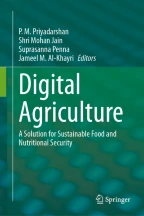
Agriculture plays a vital role in feeding the world’s growing population despite facing challenges such as dwindling arable land, water scarcity, changing climatic conditions, and the need for sustainable resource management. To address these challenges and to optimize agricultural productivity, the integration of remote sensing technologies has emerged as a transformative approach within the realm of precision agriculture. Remote sensing, encompassing satellite imagery, drones, and ground-based sensors, provides invaluable data and insights for informed decision-making, resource allocation, and yield optimization. This chapter explores the significance of remote sensing applications in modern agriculture. Satellite imagery, acquired at various spatial and temporal scales, allows farmers, agronomists, and researchers to monitor crop health, identify areas of stress, and assess the impact of environmental factors. Drones equipped with high-resolution cameras and multispectral sensors enable localized data collection, facilitating detailed field-level analysis. Ground-based sensors complement these technologies by providing real-time data on soil moisture, nutrient levels, and weather conditions. The integration of remote sensing data with geographic information systems (GIS) and data analytics tools empowers stakeholders to make precise interventions, leading to reduced resource wastage and increased efficiency. Through the identification of variability within fields, growers can implement site-specific management strategies, tailoring irrigation, fertilization, and pest control practices to the unique needs of each area. This targeted approach not only maximizes crop yield but also minimizes the environmental impact of agricultural operations. Furthermore, remote sensing fosters early detection of disease outbreaks, pest infestations, and nutrient deficiencies. Timely interventions based on accurate and up-to-date information result in improved crop health and reduced reliance on chemical inputs. Additionally, remote sensing assists in monitoring land-use changes, assessing soil erosion, and promoting sustainable land management practices. To conclude, remote sensing applications are revolutionizing agriculture by enabling precise and data-driven decision-making. By harnessing the power of satellite imagery, drones, and ground-based sensors, the agricultural sector can achieve enhanced productivity, resource efficiency, and environmental sustainability.
This is a preview of subscription content, log in via an institution to check access.
eBook EUR 181.89 Price includes VAT (France)
Hardcover Book EUR 232.09 Price includes VAT (France)
Tax calculation will be finalised at checkout
Purchases are for personal use only